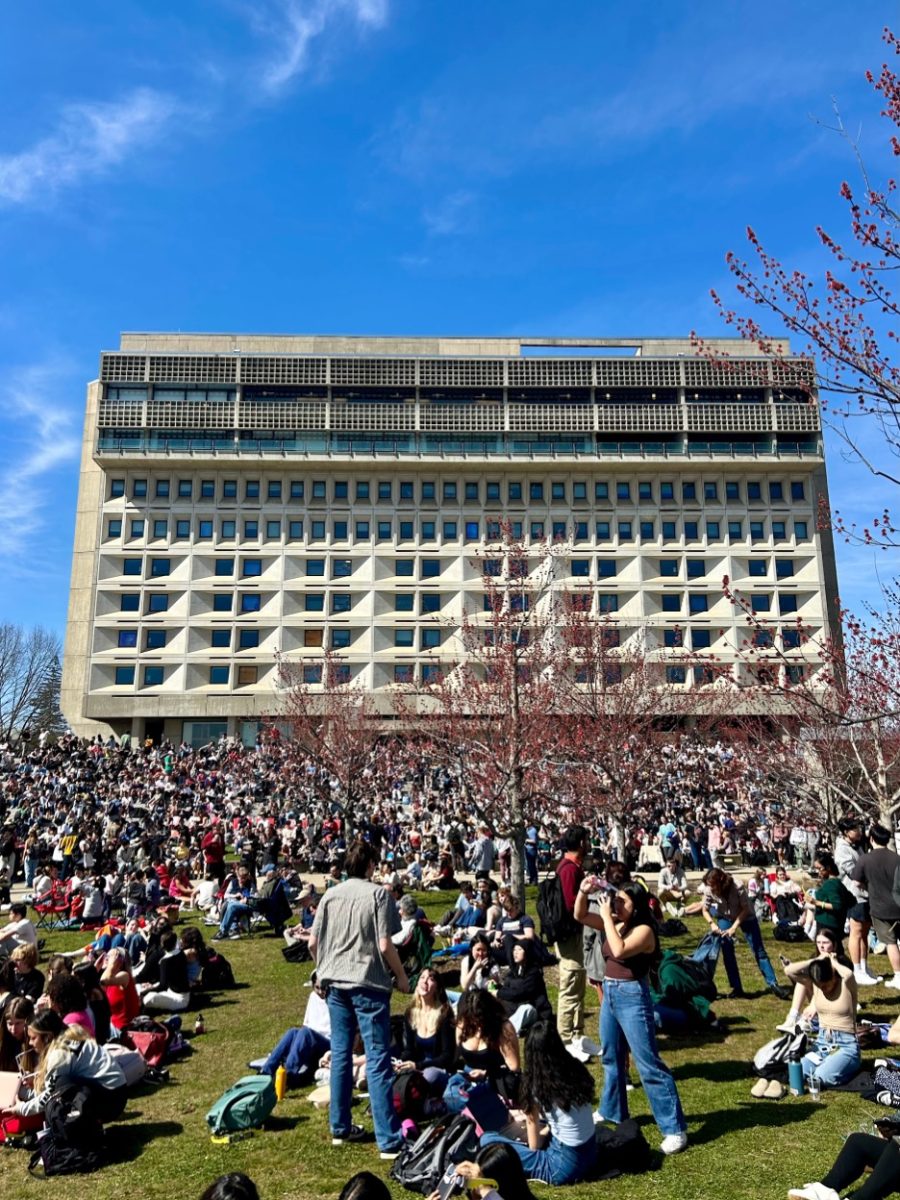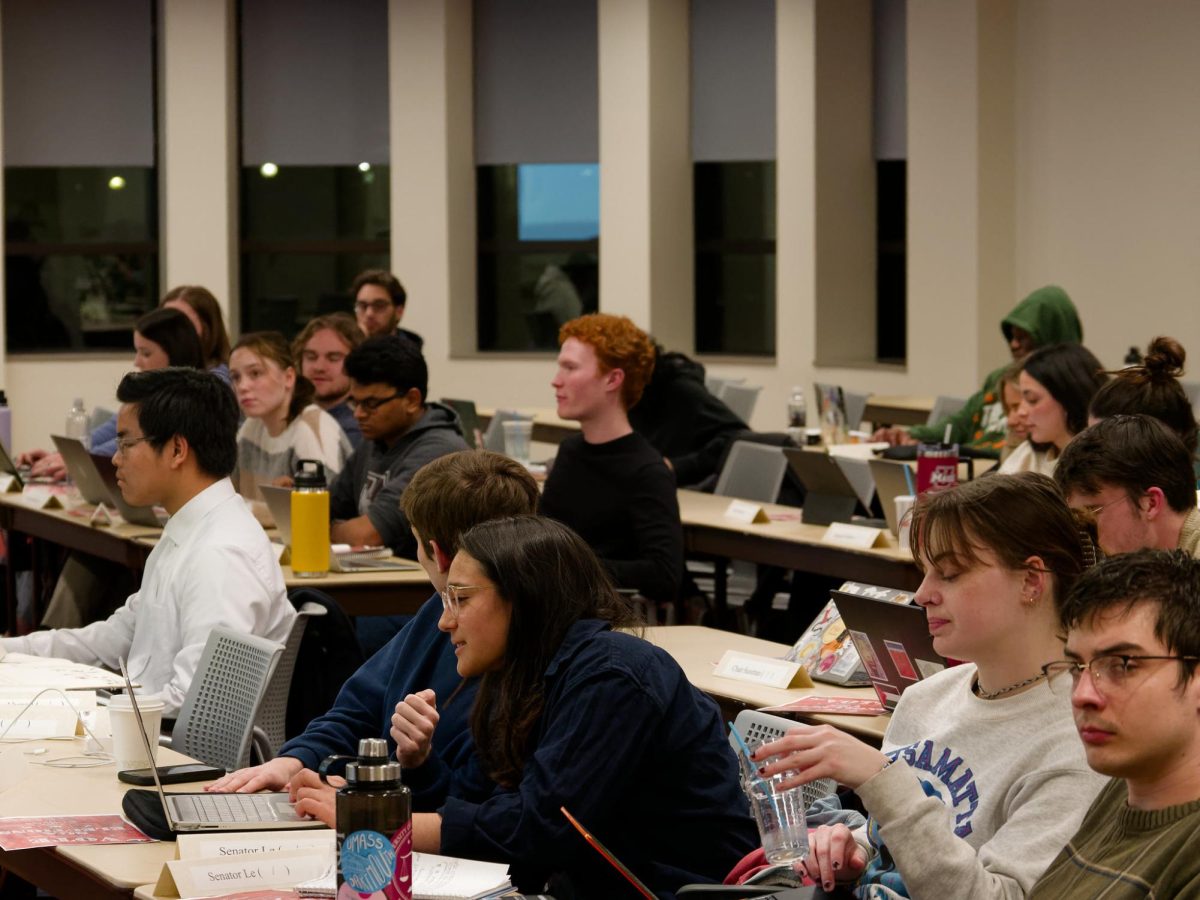 There is only one building on the University of Massachusetts campus that qualifies for the national registry of historic places by itself – the Old Chapel.
There is only one building on the University of Massachusetts campus that qualifies for the national registry of historic places by itself – the Old Chapel.
In a May, 2007 Building Conditions Report that sparked much of the debate over historic buildings on campus, the Old Chapel got a special mention – one showing that the administration was aware of the building’s historic nature and importance.
Under “Category 5: Secure and Protect,” the report says that “only the Chapel currently falls into this category. The Chapel is highly significant: it is the visual icon for the campus, the most important link to the past, and a daily reminder of the inadequacies of a system that cannot afford the $10 million renovation necessary to keep open its equivalent of Independence Hall,” the Conditions Report continues.
The Old Chapel has been uninhabited since 1996 when the marching band called it home. In 1999, the administration decided to spend $1.65 million to renovate the tower, which according to the Capital Project’s Manager, Richard Nathhorst, “we discovered there were some structural problems in the tower, the stone veneer was separating from the brick backing and there was some danger of collapse.”
The university was recognized for their effort – especially their attention to detail. “We won the Massachusetts historical commission 1999 award for historic preservation of historic buildings,” Nathhorst said, “[It’s] a very prestigious statewide award for restoration,” he continued.
“There were about 145 pieces of granite and brownstone that are replacement pieces,” said Nathhorst.
When the Old Chapel began construction in 1884, there were two main types of stones used: one from a Pelham quarry which UMass still owns, and another Longmeadow brownstone from close by.
There is still some stone – Pelham granite – left in the Pelham quarry.
“We were able to… get stone and bring it down,” Nathhorst continued.
According to Nathhorst, the Longmeadow brownstone was more difficult to replace. The quarry in Longmeadow, Mass., had been emptied, but the construction effort found an almost identical sedimentary brownstone in a Utah quarry, which was used to finish the project.
The construction firm that was commissioned by the university to do the restoration was Consigli construction, which Nathhorst said is a, “very prestigious historic masonry restoration firm. The chief stone mason goes to Italy in the winter time and studies stone work,” he explained.
This resulted in a number of upgrades to the exterior of Old Chapel: faulty stones were replaced, the tower got a cement reinforcement, the motor between the stones was replaced and, according to a 2007 Collegian article, “the original bell, Old Aggie, that chimed for the first time in 1892, found itself replaced by new Carillon Bells – 42 (actually 44) bells to be exact.”
Nathhorst went to UMass as a student back in 1979. He talked enthusiastically about the history of the campus and the potential for projects like the one done for Old Chapel.
The Old Chapel was originally used mainly as a library and the center of campus life when it was first constructed. According to Nathhorst, there was a recession much like the one America is going through now that occurred in the 1880s when the future of UMass, then called Massachusetts Agricultural College, was in question.
“Henry Hill Goodell was one of the four founding faculty members of the college, he got himself elected to state legislature and got $25,000 to build the Old Chapel,” said Nathhorst. “It wasn’t clear if Massachusetts Agricultural College was going to go forward and continue,” he went on.
The investment of $25,000 for Old Chapel renewed the state’s commitment to the university.
Jim Cahill, Director of Facilities and Campus Planning talked about the significance of the Old Chapel to the campus through a story about the interaction between his son, who is a UMass student, and an alumni.
“There was recently a woman that stopped my son… and asked if he could point her to the Chapel, she graduated from UMass 65 years ago,” said Cahill.
“She was an elderly woman coming back to campus and hasn’t been back since that time and you can imagine the changes,” Cahill mused. “She remembered the Chapel and was very fond of it and she was surprised that you couldn’t drive up to it; it was one of the things she remembered fondly from being a student,” he went on, “it’s right in the center of campus, its one of the oldest buildings on campus, it’s a beautiful building.”
Nathhorst also talked about how historical restoration of a building that was built at the time of the Old Chapel can be economically beneficial.
“Older buildings with smaller windows and thick masonry structures were made to have daylight come down into the buildings,” he said. “When energy was expensive and hard to make, buildings were built to be much more environmentally sound,” Nathhorst continued.
The administration at UMass will always have to wrestle with costs and the decision of whether to preserve old buildings and how these buildings should be treated.
Preserve UMass, an advocacy group for historical restoration at UMass, wants people to know that it is not the inside of the buildings that matter but the outside appearance.
Correspondence secretary for Preserve UMass Joseph S. Larson said, “You can do all sorts of things inside the building that meet modern needs as long as you preserve the exterior fabric of the building.”
Larson used the University Club as an example. The structure was built in 1728, and, according to the historical survey is “a great example of a complete change of what had been a residence to essentially a restaurant and pub.”
According to Larson, the home at one time housed Daniel Chester French who sculpted the Lincoln Memorial.
Larson gives the university credit for their work on Wilder Hall, when the sockets and roof needed to be replaced on the first building in the United States to be built as an academic landscape architecture program.
“The university filed that plan with the state historical commission, they went as far as Indonesia now to get the correct tile.”
Today, Wilder Hall is being used to house the Every Woman’s Center and other offices.
Preserve UMass recently put out a press release praising the university for “finally [putting] restoration of the interior of the Old Chapel on the top of a fund raising campaign.”
In a promotional brochure put out by the UMass library system, the first item is the “return [of] Old Chapel to its original glory as a library and meeting hall in the heart of the campus.”
Larson said in the release that “renovation of the interior indicates that the administration does place a high value on this important structure.”
Larson is happy with the long term handling of historic buildings at UMass.
“I don’t care how many chancellors come and go or how many physical plant people come and go but the standard is the need to… have a professional decision [about historic buildings] for the future.”
Michael Phillis can be reached at [email protected].






